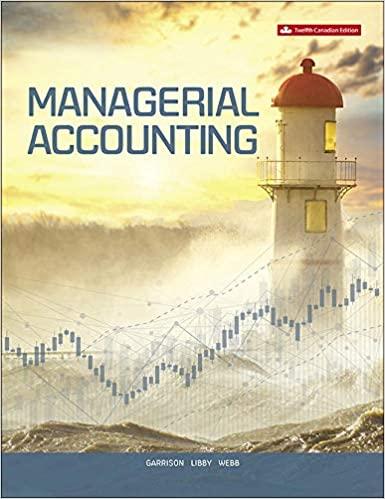Answered step by step
Verified Expert Solution
Question
1 Approved Answer
FACTS 1. Golden Gate Corporation (GGC) was formed in 2015 by two shareholders, Malcolm Jones and Linda Ramirez. Both Malcolm and Linda are U.S. residents.
FACTS 1. Golden Gate Corporation (GGC) was formed in 2015 by two shareholders, Malcolm Jones and Linda Ramirez. Both Malcolm and Linda are U.S. residents. Malcolm contributed $250,000 cash in exchange for 250 shares, or 50% of the common stock. Linda contributed a patent with a value of $250,000 and a tax basis of zero in exchange for 250 shares, or 50% of the common stock. GGC has no other classes of stock. 2. In 2016, Linda loaned the corporation an additional $500,000. The loan was documented as a five-year promissory note, with a market interest rate, interest payable quarterly, and the principal of $500,000 due in five years. GGC made all interest payments on a timely basis but, in 2021, could not repay the principal. Currently, Linda and GGC have no arrangement regarding when the loan will be repaid. 3. In 2017, GGC needed additional cash. In 2017, it brought in four new investors, Individuals A, B, C, and D, each of whom acquired 100 shares of the corporations common stock for $75,000 cash. All four individuals are U.S. citizens. 4. In 2018, GGC obtained a loan of $1,000,000 from a bank. The loan was documented as a ten-year promissory note, with a market interest rate, interest payable quarterly, and the principal of $1,000,000 due in ten years. Linda agreed to subordinate her $500,000 loan to the bank loan as part of the financing. GGC made all interest payments on a timely basis and has made no principal payments. 5. In 2019, GGC hired a key engineer. As GGC was experiencing cash flow issues, the engineer received 100 shares of stock with an estimated value of $100,000 instead of his first six months salary. 6. On July 1, 2021, Individual D died, and Ds stock in GGC was transferred to Ds Estate. The Estate plans to distribute its assets, including its GGC stock, to Ds children by June 30, 2023. Delays in settling the Estates administrative matters might move the distribution date to the end of 2023. GGC has incurred losses since its inception. GGCs Board of Directors is concerned about the companys future profitability. In 2022, the Directors, Linda, and Malcolm held a meeting to discuss the companys future. The Board considered several options, including liquidation, sale of the stock or assets of the business, and continuing the business with additional financing. You have been hired by GGCs Board to provide tax advice on several questions. Your objective is to provide the best solutions for the shareholders of GGC as a whole and not just for Linda or Malcolm. GGC has provided you with the following documents: Capitalization Table showing current stock ownership Balance Sheet Projection of Income/Loss for the next five years. (Note: Excel versions of these documents are attached to the Case Study Assignment on eLearning if you wish to use them in your responses.) CAPITALIZATION TABLE as of December 31, 2022 BALANCE SHEET as of December 31, 2022 PROJECTED INCOME/LOSS for Years 2023 2027 Assume that unless provided otherwise: GGC has a net operating loss carryforward of 1,000,000, equal to its accumulated deficit, as of the end of 2022. GGC expects to lose an additional 200,000 in 2023 but then be profitable in the subsequent four years. GGC expects the value of its stock to double over the next five years due to achieving profitability and the increase in value of its goodwill and intangibles. GGC has a deficit in accumulated earnings and profits of (1,000,000) at the end of 2022. Its earnings and profits (before taxes) are expected to increase by its projected income (loss) for 2023 through 2027, as indicated above. Unless otherwise noted, GGCs projected taxable income is equal to its projected pre-tax book income. Except for the patent contributed by Linda in exchange for stock, the tax basis of its assets is equal to book value. The company has not paid any dividends and does not plan to do so in the foreseeable future. The company has a written plan to expand its business into two states, the costs of which are expected to be $200,000 over several years. However, the company is not certain when the expansion will take place. It is also considering acquiring a smaller competitor for a cost of $300,000, but no transaction has been approved by its Board. TOPIC 4 Sale of a Business The Board Chairperson mentioned confidentially that California Software Corporation might be interested in acquiring GGCs business. California Software Corporation has suggested that it could acquire GGC in one of two ways: (1) buy all of its assets for $1,800,000 plus assume its liabilities, or (2) issue 1,800 shares of California Software Corporation voting common stock worth $1,000 per share, to GGCs shareholders in exchange for all of their GGC stock. Considering the tax consequences to GGC and its shareholders, and the tax advantages or disadvantages to Software Corporation, which alternative would you recommend, and why? Assume for purposes of your analysis that the transaction took place on January 2, 2023. Consider in your response the tax consequences to GGC, its shareholders, and to California Software Corporation. Show your calculations and cite any applicable authority in your
Step by Step Solution
There are 3 Steps involved in it
Step: 1

Get Instant Access to Expert-Tailored Solutions
See step-by-step solutions with expert insights and AI powered tools for academic success
Step: 2

Step: 3

Ace Your Homework with AI
Get the answers you need in no time with our AI-driven, step-by-step assistance
Get Started


